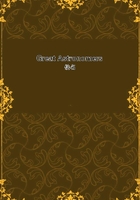
第66章 BRINKLEY.(3)
In the original equipment of the observatory, Ussher, with the natural ambition of a founder, desired to place in it a telescope of more magnificent proportions than could be found anywhere else. The Board gave a spirited support to this enterprise, and negotiations were entered into with the most eminent instrument- maker of those days. This was Jesse Ramsden (1735-1800), famous as the improver of the sextant, as the constructor of the great theodolite used by General Roy in the English Survey, and as the inventor of the dividing engine for graduating astronomical instruments. Ramsden had built for Sir George Schuckburgh the largest and most perfect equatorial ever attempted. He had constructed mural quadrants for Padua and Verona, which elicited the wonder of astronomers when Dr.
Maskelyne declared he could detect no error in their graduation so large as two seconds and a half. But Ramsden maintained that even better results would be obtained by superseding the entire quadrant by the circle. He obtained the means of testing this prediction when he completed a superb circle for Palermo of five feet diameter.
Finding his anticipations were realised, he desired to apply the same principles on a still grander scale. Ramsden was in this mood when he met with Dr. Ussher. The enthusiasm of the astronomer and the instrument-maker communicated itself to the Board, and a tremendous circle, to be ten feet in diameter, was forthwith projected.
Projected, but never carried out. After Ramsden had to some extent completed a 10-foot circle, he found such difficulties that he tried a 9-foot, and this again he discarded for an 8-foot, which was ultimately accomplished, though not entirely by himself.
Notwithstanding the contraction from the vast proportions originally designed, the completed instrument must still be regarded as a colossal piece of astronomical workmanship. Even at this day I do not know that any other observatory can show a circle eight feet in diameter graduated all round.
I think it is Professor Piazzi Smith who tells us how grateful he was to find a large telescope he had ordered finished by the opticians on the very day they had promised it. The day was perfectly correct; it was only the year that was wrong. A somewhat remarkable experience in this direction is chronicled by the early reports of the visitors to Dunsink Observatory. I cannot find the date on which the great circle was ordered from Ramsden, but it is fixed with sufficient precision by an allusion in Ussher's paper to the Royal Irish Academy, which shows that by the 13th June, 1785, the order had been given, but that the abandonment of the 10-foot scale had not then been contemplated. It was reasonable that the board should allow Ramsden ample time for the completion of a work at once so elaborate and so novel. It could not have been finished in a year, nor would there have been much reason for complaint if the maker had found he required two or even three years more.
Seven years gone, and still no telescope, was the condition in which the Board found matters at their first visitation in 1792. They had, however, assurances from Ramsden that the instrument would be completed within the year; but, alas for such promises, another seven years rolled on, and in 1799 the place for the great circle was still vacant at Dunsink. Ramsden had fallen into bad health, and the Board considerately directed that "inquiries should be made." Next year there was still no progress, so the Board were roused to threaten Ramsden with a suit at law; but the menace was never executed, for the malady of the great optician grew worse, and he died that year.
Affairs had now assumed a critical aspect, for the college had advanced much money to Ramsden during these fifteen years, and the instrument was still unfinished. An appeal was made by the Provost to Dr. Maskelyne, the Astronomer Royal of England, for his advice and kindly offices in this emergency. Maskelyne responds-- in terms calculated to allay the anxiety of the Bursar--"Mr. Ramsden has left property behind him, and the College can be in no danger of losing both their money and the instrument." The business of Ramsden was then undertaken by Berge, who proceeded to finish the circle quite as deliberately as his predecessor. After four years Berge promised the instrument in the following August, but it did not come. Two years later (1806) the professor complains that he can get no answer from Berge. In 1807, it is stated that Berge will send the telescope in a month. He did not; but in the next year (1808), about twenty-three years after the great circle was ordered, it was erected at Dunsink, where it is still to be seen.
The following circumstances have been authenticated by the signatures of Provosts, Proctors, Bursars, and other College dignitaries:--In 1793 the Board ordered two of the clocks at the observatory to be sent to Mr. Crosthwaite for repairs. Seven years later, in 1800, Mr.